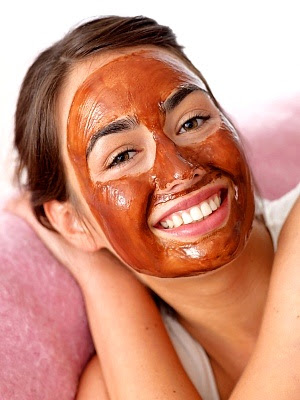
- If you ever wonder just what makes a foundation glide on like silk, an eye shadow iridescent or your lipstick ruby red, look no further than the product's packaging. Such disclosure is mandated by many governments, and gives you the opportunity to weed out products whose ingredients may be incompatible with your skin. It may read like a chemistry report, but it can be deciphered.
- Check out the ingredients in your blushes, lipsticks and eye shadows and you're likely to find color names preceded by F, D & C. These letters refer to color batches that were approved by the FDA prior to insertion into the product.
- Look for products that contain a lake, which inhibit the bleeding or running of color.
- Ingredients suffixed in parabens are preservatives, which guarantee your product a longer shelf life.
- Consider that key ingredients in foundation, powder, blush and shadows allow the product to glide smoothly over the skin.
- Talc, or magnesium silicate, as well as dimethicone and mica promote this action.
- Remember the most effective sunscreens you may find in your base or powder, include titanium dioxide or zinc oxide.
- Oil and water are often found in foundation, and when mixed and blended well offer good coverage and a clean finish.
- Keep in mind that many cosmetic companies are adding vitamins and essential oils to makeup preparations and spinning them as treatment makeup.
- The vitamin C, A or E or acne fighting agents that companies do add to cosmetic preparations are not added in quantities that can significantly effect skin texture.
HOW TO DECIPHER THE INGREDIENTS IN YOUR COSMETICS
- If you ever wonder just what makes a foundation glide on like silk, an eye shadow iridescent or your lipstick ruby red, look no further than the product's packaging. Such disclosure is mandated by many governments, and gives you the opportunity to weed out products whose ingredients may be incompatible with your skin. It may read like a chemistry report, but it can be deciphered.
- Check out the ingredients in your blushes, lipsticks and eye shadows and you're likely to find color names preceded by F, D & C. These letters refer to color batches that were approved by the FDA prior to insertion into the product.
- Look for products that contain a lake, which inhibit the bleeding or running of color.
- Ingredients suffixed in parabens are preservatives, which guarantee your product a longer shelf life.
- Consider that key ingredients in foundation, powder, blush and shadows allow the product to glide smoothly over the skin.
- Talc, or magnesium silicate, as well as dimethicone and mica promote this action.
- Remember the most effective sunscreens you may find in your base or powder, include titanium dioxide or zinc oxide.
- Oil and water are often found in foundation, and when mixed and blended well offer good coverage and a clean finish.
- Keep in mind that many cosmetic companies are adding vitamins and essential oils to makeup preparations and spinning them as treatment makeup.
- The vitamin C, A or E or acne fighting agents that companies do add to cosmetic preparations are not added in quantities that can significantly effect skin texture.
